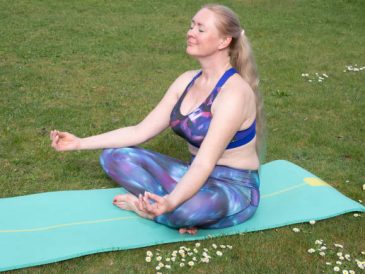In recent years, yoga has surged in popularity as a holistic practice for physical, mental, and spiritual well-being. Its benefits, ranging from increased flexibility and strength to stress reduction and improved focus, have attracted millions worldwide to roll out their mats and embrace the ancient discipline. Yet, within this seemingly serene realm of gentle stretches and controlled breathing lies a paradox: yoga, a practice revered for its healing properties, can also be a source of pain. However, understanding this paradox illuminates how yoga, when practiced mindfully and with proper guidance, can both cause and alleviate discomfort, ultimately leading to greater resilience and well-being.
The Rise of Yoga: Yoga, originating in ancient India, encompasses a diverse range of practices aimed at integrating mind, body, and spirit. While the physical postures, or asanas, are perhaps the most familiar aspect of yoga in Western culture, they are just one component of a comprehensive system that includes breathing techniques (pranayama), meditation, ethical guidelines (yamas and niyamas), and more. The word “yoga” itself means union or yoking, symbolizing the connection between individual consciousness and universal consciousness.
The benefits of yoga are widely acknowledged and backed by scientific research. Regular practice has been shown to improve flexibility, balance, and strength, enhance respiratory function, reduce stress, anxiety, and depression, and even boost immune function. As a result, yoga has become increasingly integrated into mainstream healthcare, with many doctors prescribing it as a complementary therapy for various conditions, including chronic pain, hypertension, and insomnia.
The Paradox of Pain: Despite its myriad benefits, practitioners of yoga sometimes experience pain or discomfort, leading to what can be termed the “yoga paradox.” This paradox arises from several factors inherent in the practice itself:
- Physical Intensity: While yoga is often portrayed as gentle and low-impact, many styles, such as power yoga or hot yoga, can be physically demanding. Holding challenging poses for extended periods or pushing oneself too hard can lead to muscle strain, joint stress, or even injury.
- Individual Differences: Bodies vary widely in terms of flexibility, strength, and susceptibility to injury. What may be a safe and beneficial pose for one person could cause discomfort or harm to another. Without proper alignment and modifications, individuals may inadvertently exacerbate existing issues or create new ones.
- Mind-Body Connection: Yoga encourages practitioners to cultivate awareness of their bodies and minds. This heightened sensitivity can bring attention to areas of tension or imbalance that were previously overlooked, sometimes causing discomfort as these issues come to the forefront of consciousness.
- Emotional Release: Yoga can serve as a powerful tool for emotional healing, often unlocking stored trauma or stress held within the body. As practitioners delve deeper into their practice, they may encounter intense emotions or memories that manifest as physical sensations, contributing to feelings of discomfort or unease.
Alleviating Pain Through Yoga: While it may seem counterintuitive for a practice that can cause pain and offer relief, the key lies in how yoga is approached and practiced. By embracing certain principles and techniques, practitioners can harness the healing potential of yoga to address and alleviate discomfort:
- Mindful Awareness: Central to the practice of yoga is mindfulness—the ability to pay attention to the present moment without judgment. By tuning into sensations within the body, practitioners can identify areas of tension or discomfort and respond with compassion and self-care.
- Proper Alignment: Alignment is crucial in yoga to ensure safe and effective practice. Working with knowledgeable instructors who emphasize adequate alignment and offer modifications tailored to individual needs can help prevent injury and alleviate existing pain.
- Breath Awareness: Breath is a powerful tool for calming the mind and relaxing the body. By syncing movement with breath and practicing pranayama techniques, practitioners can reduce tension, increase oxygen flow, and promote relaxation, easing physical and emotional discomfort.
- Gentle Exploration: Rather than pushing through pain or striving for perfection, yoga encourages a gentle, exploratory approach. Listening to the body’s cues and respecting its limits fosters a sense of self-awareness and self-compassion, allowing practitioners to move with greater ease and grace.
- Integrative Healing: Yoga offers a holistic approach to healing that addresses not only the physical body but also the mind and spirit. By incorporating meditation, visualization, and other mindfulness practices, practitioners can cultivate inner resilience and tap into the body’s innate capacity for self-repair and renewal.
Embracing the Paradox: In embracing the paradox of yoga—its potential to both cause and alleviate pain—practitioners can deepen their understanding of themselves and their bodies. Rather than viewing discomfort as a barrier to practice, it can be seen as an opportunity for growth and transformation. By approaching yoga with curiosity, compassion, and mindfulness, individuals can navigate the complexities of their own unique experience, finding balance, healing, and, ultimately, a deeper sense of well-being.
The yoga paradox highlights the multifaceted nature of the practice, encompassing both challenges and opportunities for growth. By acknowledging the potential for discomfort and injury while also honoring the profound healing potential of yoga, practitioners can cultivate a more balanced and sustainable approach to their practice. With mindful awareness, proper alignment, and a spirit of curiosity and self-compassion, yoga can be a powerful tool for both causing and treating pain, ultimately leading to greater resilience, vitality, and wholeness.




